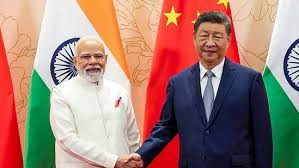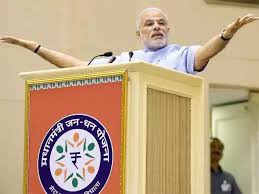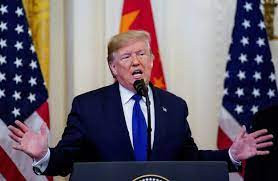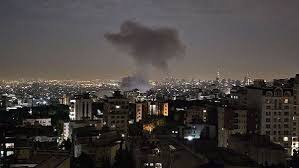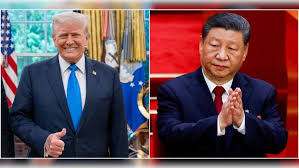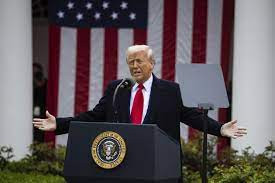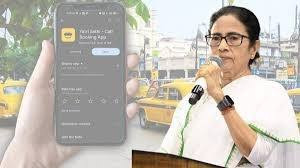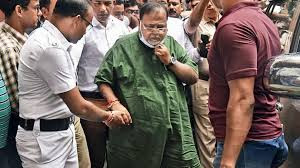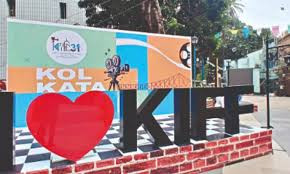Strengthening South Asian Bonds: Key Diplomatic Lessons from PM Modi’s Visit to Sri Lanka

Prime Minister Narendra Modi’s recent visit to Sri Lanka has been an important milestone in India’s evolving foreign policy, reflecting both the complexity and the potential of diplomatic ties within the South Asian region. This visit comes at a time when geopolitical dynamics in the Indian Ocean region are rapidly shifting, with rising tensions and growing economic competition among major global players. PM Modi's engagement with Sri Lanka is a clear indication of India's broader diplomatic strategy — one that emphasizes cooperation, regional stability, and a commitment to addressing both economic and security concerns.
Sri Lanka, situated at a crucial crossroads in the Indian Ocean, has always been a strategic partner for India. The visit underscores the deep, multi-faceted relationship between the two countries, which spans across history, culture, security, and trade. It is a reminder that diplomatic ties in South Asia are not solely shaped by immediate economic or security considerations but by a broader and deeper understanding of shared histories and challenges. This editorial delves into the lessons that New Delhi can draw from Modi’s Sri Lanka trip, with particular attention to the evolving nature of India’s regional diplomacy.
At the heart of the visit was the reinforcement of India's commitment to ensuring regional stability. In recent years, Sri Lanka has found itself at the crossroads of competing global powers, particularly India and China. The island nation’s strategic location has made it a critical player in the regional geopolitical chessboard. For India, Sri Lanka is not just a neighbor but a partner whose stability is vital for the broader security framework of South Asia. Prime Minister Modi’s focus on security cooperation, particularly in the realms of counter-terrorism and maritime security, was evident throughout the visit. Discussions centered on bolstering intelligence-sharing and coordinated security efforts, highlighting India’s willingness to partner with Sri Lanka to counter common regional threats.
What is most noteworthy, however, is India’s approach to strengthening regional security without being overbearing. Modi’s diplomacy underscores an important lesson in balancing influence with sensitivity. India has long been wary of any foreign influence, particularly Chinese, in Sri Lanka, but Modi has consistently pushed for a more inclusive and cooperative approach that does not alienate Sri Lanka or hinder its sovereignty. The idea is clear: stability comes not through dominance but through mutual respect and shared interests.
In addition to security, the economic dimension of Modi’s visit was another key takeaway for India’s diplomatic future. Sri Lanka’s recent economic struggles have put significant pressure on its government, and India’s support in addressing these challenges has been critical. During the visit, Modi emphasized India's readiness to assist Sri Lanka in areas such as infrastructure development, energy, and healthcare. This proactive engagement in Sri Lanka’s economic recovery speaks to the lessons India has learned about the importance of economic diplomacy.
Unlike traditional aid, India’s approach appears to focus on sustainable, long-term development initiatives. A prime example is India’s involvement in the construction and development of the Colombo Port City, a significant infrastructure project with the potential to boost Sri Lanka's global trade connectivity. India’s financial contributions, coupled with technical and expertise-based support, ensure that both countries benefit from these projects, reinforcing New Delhi’s growing role as a partner in Sri Lanka’s economic revival.
What this also signals is a subtle but important shift in India’s approach to South Asia. While India has historically been a dominant force in the region, particularly in terms of its economic and political influence, PM Modi’s diplomatic engagement demonstrates an understanding that regional cooperation is a two-way street. By prioritizing infrastructure projects, trade, and joint ventures over traditional aid, India is reinforcing the idea of shared prosperity, where both nations contribute equally to the relationship.
Another key dimension of Modi’s visit was cultural diplomacy. India and Sri Lanka share deep cultural, historical, and religious ties that date back centuries. For India, engaging with Sri Lanka’s Buddhist heritage and fostering people-to-people ties is an essential component of its regional strategy. Modi’s visit to the revered Sri Dalada Maligawa temple, and his meeting with Sri Lanka’s Buddhist community, was not just a symbolic gesture; it underscored the cultural bonds that tie both countries together. This kind of cultural diplomacy is often overlooked in favor of more immediate political or economic objectives. However, as this visit shows, fostering cultural exchanges and promoting understanding is crucial for building lasting, meaningful relationships.
Cultural diplomacy also helps bridge differences, particularly when sensitive issues arise. One such issue that has long been a point of contention between India and Sri Lanka is the situation of the Tamil community, particularly in the aftermath of Sri Lanka's civil war. Modi’s visit highlighted this delicate issue, as he voiced India’s support for the ongoing reconciliation process in Sri Lanka. While there is no easy solution to the Tamil issue, India’s position—emphasizing dialogue and peaceful solutions—illustrates an important lesson in handling sensitive topics within diplomatic frameworks.
One of the most significant diplomatic lessons from Modi’s visit is the necessity of acknowledging historical complexities while still striving to move forward. The Tamil issue remains a sensitive topic, yet Modi’s approach shows that addressing such concerns is critical to strengthening long-term bilateral ties. By encouraging Sri Lanka to take steps toward reconciliation without imposing solutions, Modi’s visit reflects the delicate balancing act that defines Indian diplomacy in South Asia.
Furthermore, Modi’s engagement in Sri Lanka serves as a testament to the evolving nature of Indian foreign policy in the region. South Asia, once dominated by traditional power dynamics and political posturing, is now characterized by a more nuanced approach that recognizes the interdependence of nations. For India, this means focusing not just on bilateral relations but on regional partnerships that go beyond immediate political or strategic goals. This is particularly important in the face of global economic challenges and a shifting global order, where regional collaboration can offer the most resilient solution to future problems.
PM Modi’s visit to Sri Lanka offers a valuable blueprint for India’s future diplomatic engagements across South Asia. By focusing on regional stability, economic cooperation, cultural diplomacy, and sensitive handling of long-standing issues, India has set a new precedent for what successful, mutually beneficial diplomacy looks like. For New Delhi, these lessons are not just about strengthening ties with one neighbor; they are about shaping a broader, more inclusive vision for South Asia, where cooperation and shared prosperity take precedence over rivalry and competition. India’s role in the region, as demonstrated through this visit, is that of a supportive and constructive partner, not just a dominant regional power.
You might also like!


